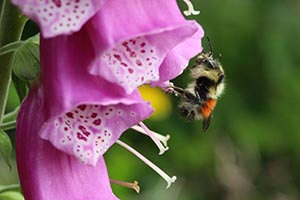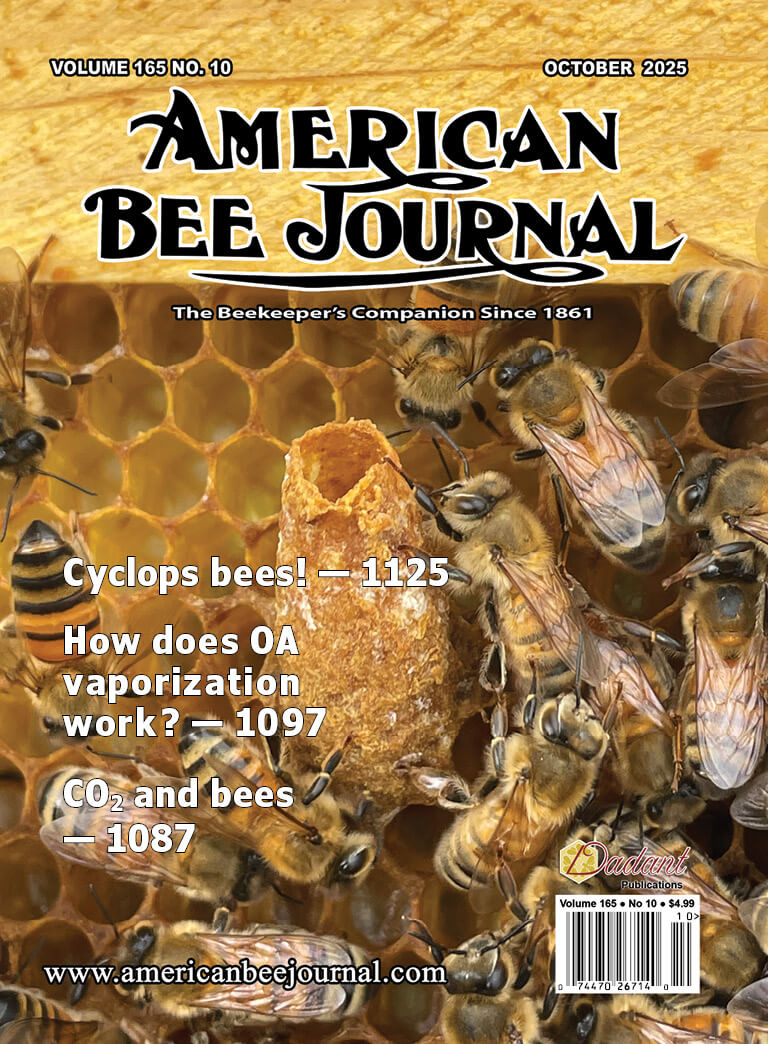
Those new to the world of bees often believe that honey bees can pollinate anything. Some beekeepers are barely aware of other pollinators or the great diversity among them. But the single-pollinator theory couldn’t be further from the truth. Instead, millions of years of evolution have brought plants and specific pollinators together, each trading for something they need, and each vitally dependent on the other.
When I first heard the term pollination syndrome I thought it was some kind of disease. It didn’t sound good. But pollinator syndromes are simply sets of characteristics that make a certain plant attractive to a specific type of pollinator. The first definition of syndrome at Merriam- Webster.com is the one we most often think of, and it sounds like a medical text: “a group of signs and symptoms that occur together and characterize a particular abnormality or condition.” But the second definition is the one we need here: “a set of concurrent things that usually form an identifiable pattern.”
Taken together, the characteristics of a flower make it more or less attractive to a certain kind of pollinator, which is why we see different pollinators on different flowers. As an example of a plant characteristic, think of the length of the corolla — the tube made by a whorl of petals. Some plants, like honeysuckle (Lonicera), have a long and deep flower. The only creatures that can pollinate this type of flower are those with equally long tongues or with very tiny bodies that can crawl down to the nectar regardless of their tongue length.
Conversely, some of the disk-shaped flowers, such as those in the family Asteraceae, have very short flowers which are preferred by short-tongued animals, but can also be used by others.
As the name suggests, a syndrome is not one characteristic but “a set of concurrent things.” In addition to corolla length, these characteristics may include the presence or absence of nectar, landing platforms, and aromas. In addition, visual patterns known as nectar guides — sometimes evident only to those that can see UV light — may point to the flower’s sweet reward. Other characteristics of a syndrome may include flower color, the amount of pollen, the size of the pollen grains, the sweetness of the nectar, and whether the flower opens during the day or in the evening. Just as an individual goes to the restaurant that carries his favorite dishes, a pollinator goes to the flower where conditions are just right and the food is perfect.
A flower for the birds
If we look at pairings of plants and their pollinators, we can see how they work together. For example, birds prefer flowers with deep corollas and lots of nectar. They also choose flowers that are red, white, or orange. Some things, like nectar guides and a sweet odor, are irrelevant to birds, but some prefer a landing platform to stand on.
If you look at a commercial hummingbird feeder, you can see how the designers use the hummingbird’s pollinator syndrome to attract the birds to your yard. The nectar pool is deep, but not scented. The fake flowers have long red corollas but no nectar guides, and the flowers are elevated off the ground. In their search for food, the hummingbirds recognize their preferred characteristics and flock to the pseudo-plant for a drink.
Types of pollination syndromes
It’s not surprising that names have been assigned to all the different types of pollination syndromes. The names are old and, in some cases, their descriptions have changed as we’ve learned more about pollination. Then, too, the groups are flexible, often crossing over one another, making each name somewhat fluid. Still, to understand the concept of syndromes, it helps to review the common types.
All the pollination syndromes are divided into two main categories, abiotic and biotic. The abiotic syndromes include wind pollination (anemophily) and water pollination (hydrophily). The root “phily” means “love” or “affinity,” so these plants have a love for wind or water
Abiotic pollination syndromes
Anemophily: Wind pollinated plants have no need to attract animals, so their flowers are not colorful or large, and they don’t produce sweet nectar or piquant odors. When you calculate the energy saved by not having to produce showy flowers spiked with attractants, it seems like a plus for plants. After all, wind is everywhere and it’s free to use, so it seems like the plant is getting something for nothing.
However, wind is not very targeted. It blows randomly without a plan or sometimes it doesn’t blow at all. To make up for this randomness and uncertainty, anemophilous plants need to produce a ton of pollen to assure that a least some of it gets where it needs to go. Without an animal charged with transporting the pollen from the anther of one flower to the stigma of the target flower, a plant must expend copious energy in over-production.
In fact, egregious amounts of pollen can often be seen smoking from trees and misting windshields and windowsills with yellow dust. Unlike sticky pollen from showy flowers, wind-pollinated flowers have tiny grains especially designed to float on air currents for long distances and remain suspended for the duration of the trip. These are the pollens that cause allergic reactions such as sneezing, sniffling, and bloodshot eyes. Without a doubt, wind-borne pollen is the stuff that gives pollen a bad rap. When you find a plant with dull or nearly non-existent petals lacking color, odor, and nectar, and if that plant has loads of powder-like pollen, you can almost be assured it is anemophilous. Good examples are beech, alder, birch, and hazel whose long catkins dangle in the spring breezes and release choking clouds of cream-colored dust. Bees, especially honey bees, often collect this pollen for early spring brood rearing, arriving back at their hives with tightly packed, …. .


